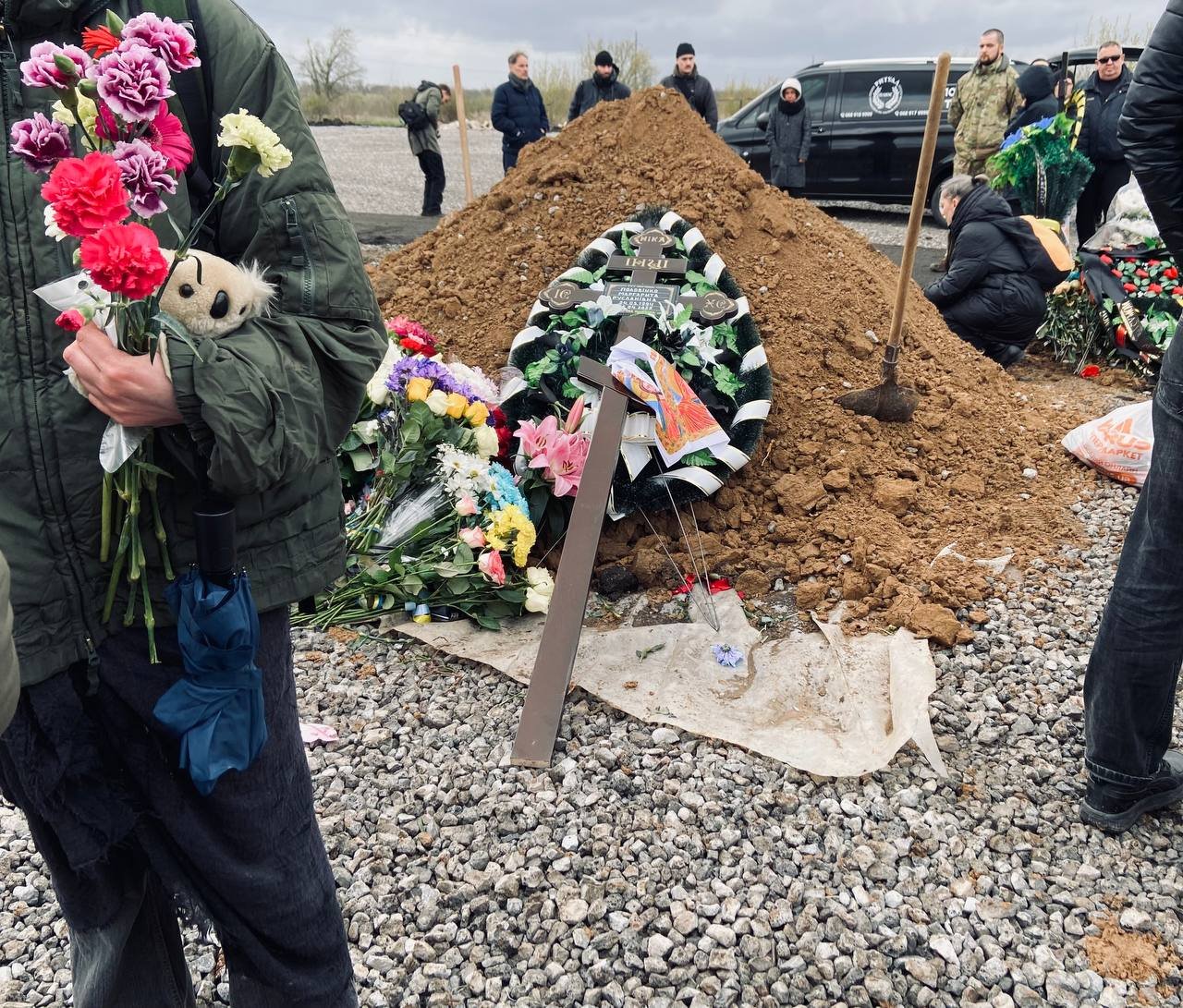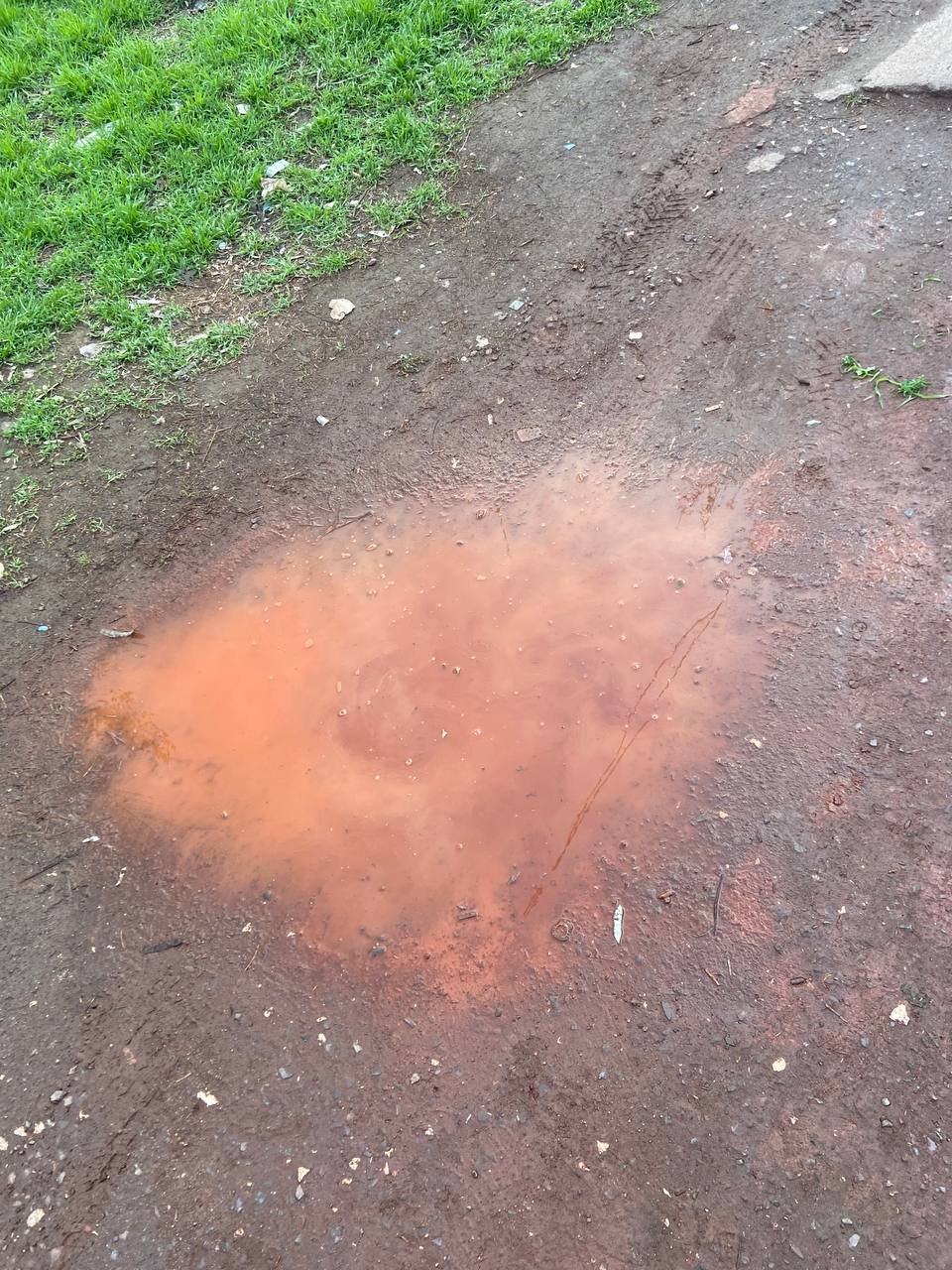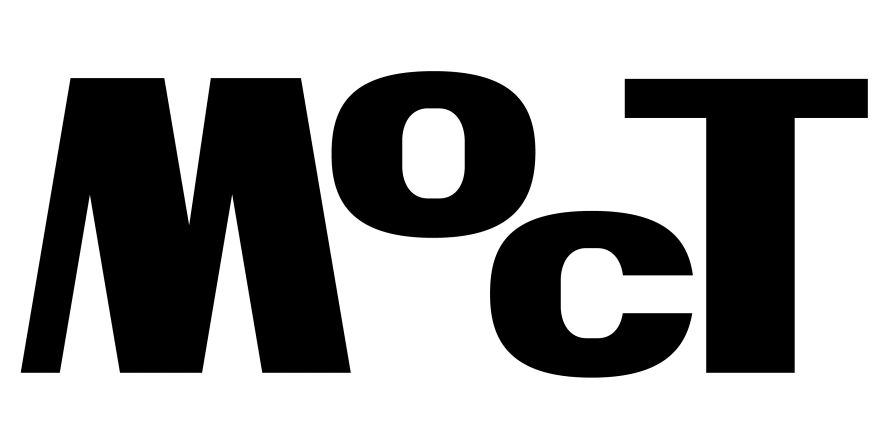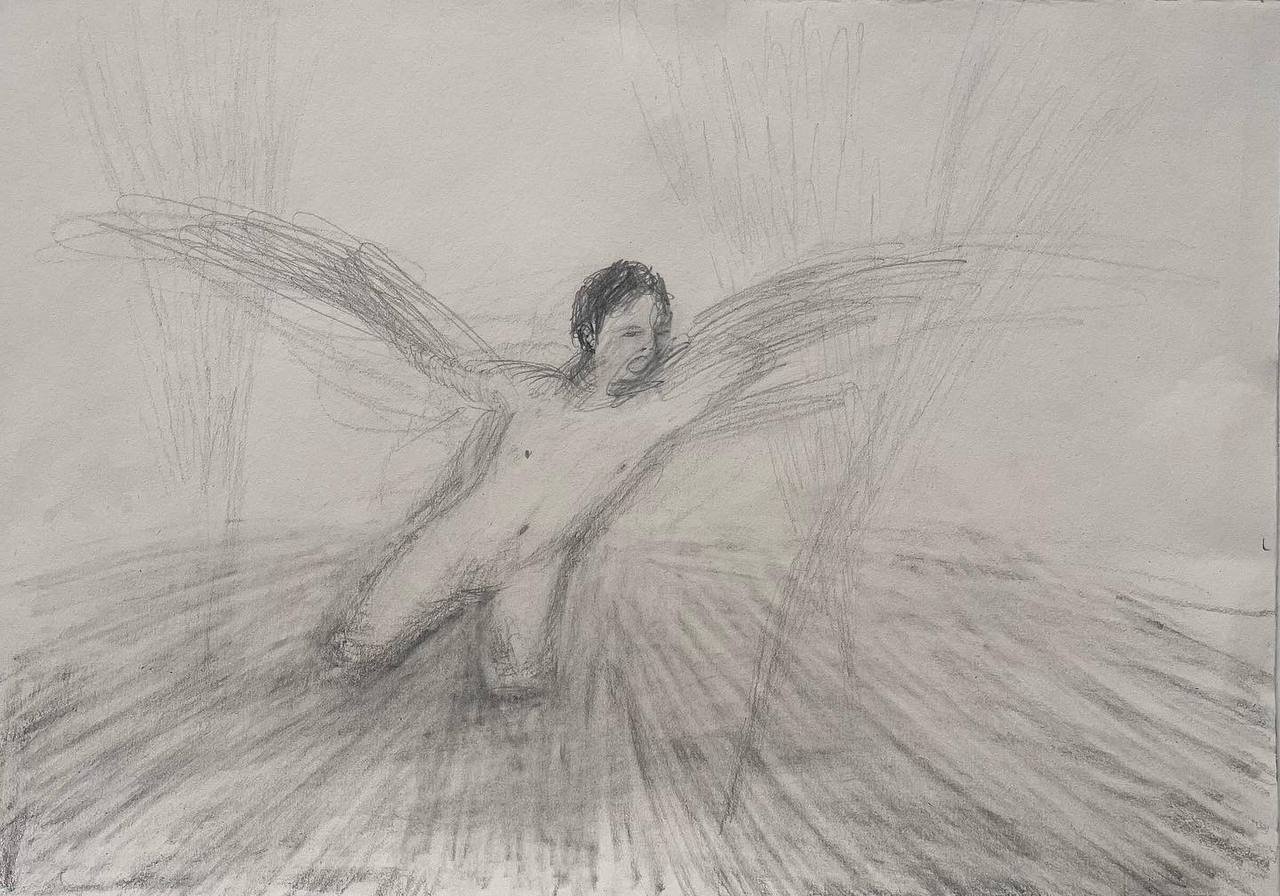Elisabeth Bauer
Marharyta Polovinko (1994—2025): Artist, activist, defender. Born on 24 March 1994 in Kryvyi Rih, Marharyta Polovinko first studied painting at the Dnipro Theatre and Art College before continuing her artistic education at the National Academy of Fine Arts and Architecture (NAOMA) in Kyiv, where she graduated with a diploma in painting in 2019. Since 2022, the artist has been working in tactical medicine, first as a volunteer on rescue missions in the flooded Kherson region and then as a paramedic evacuating wounded soldiers from the front line of the russian war in Ukraine. At the end of 2024, Marharyta decided to join the military resistance in arms as a drone pilot for the Second Mechanised Battalion of the Third Assault Brigade. On 5 April 2025, she was killed in action.
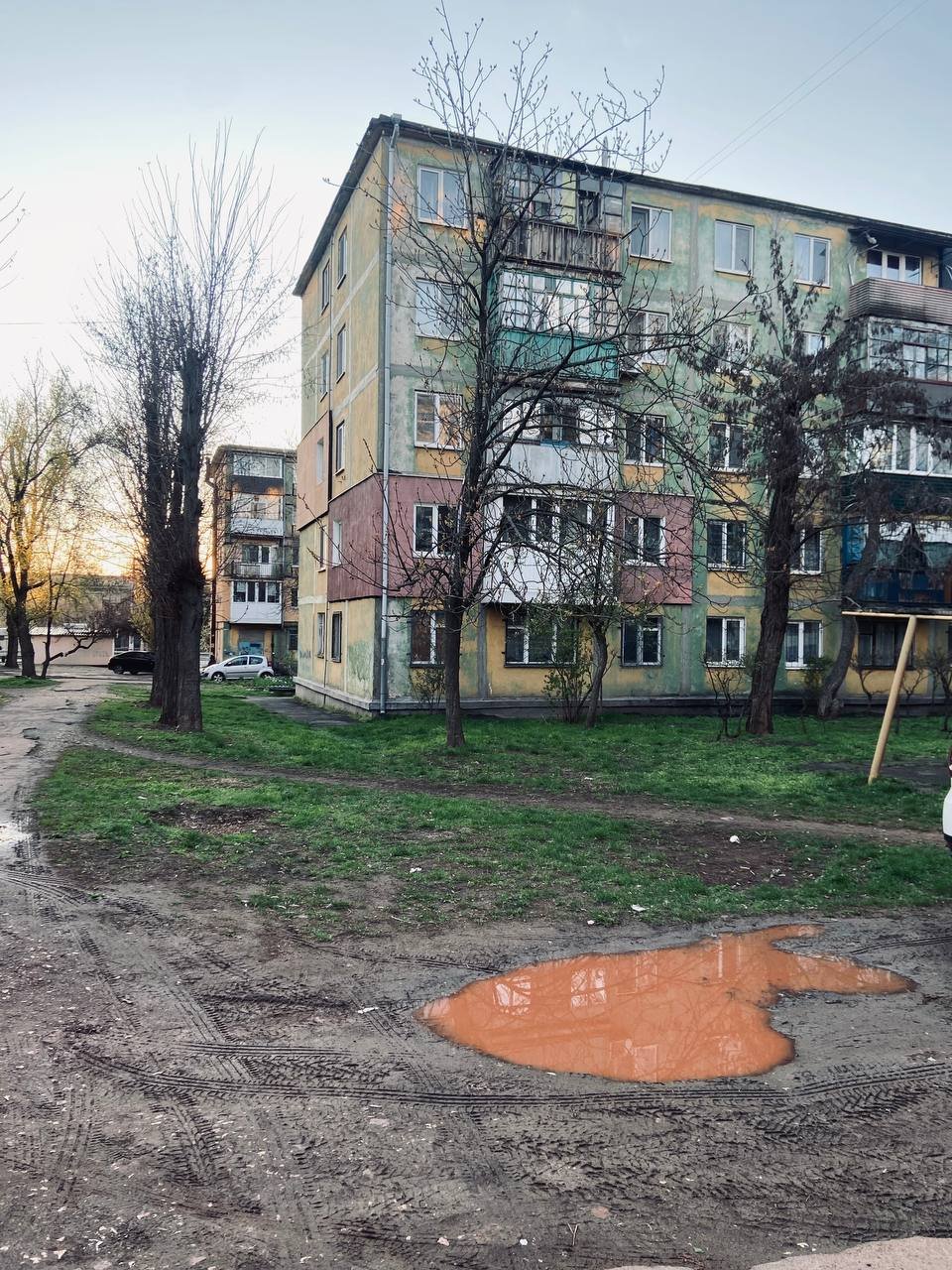
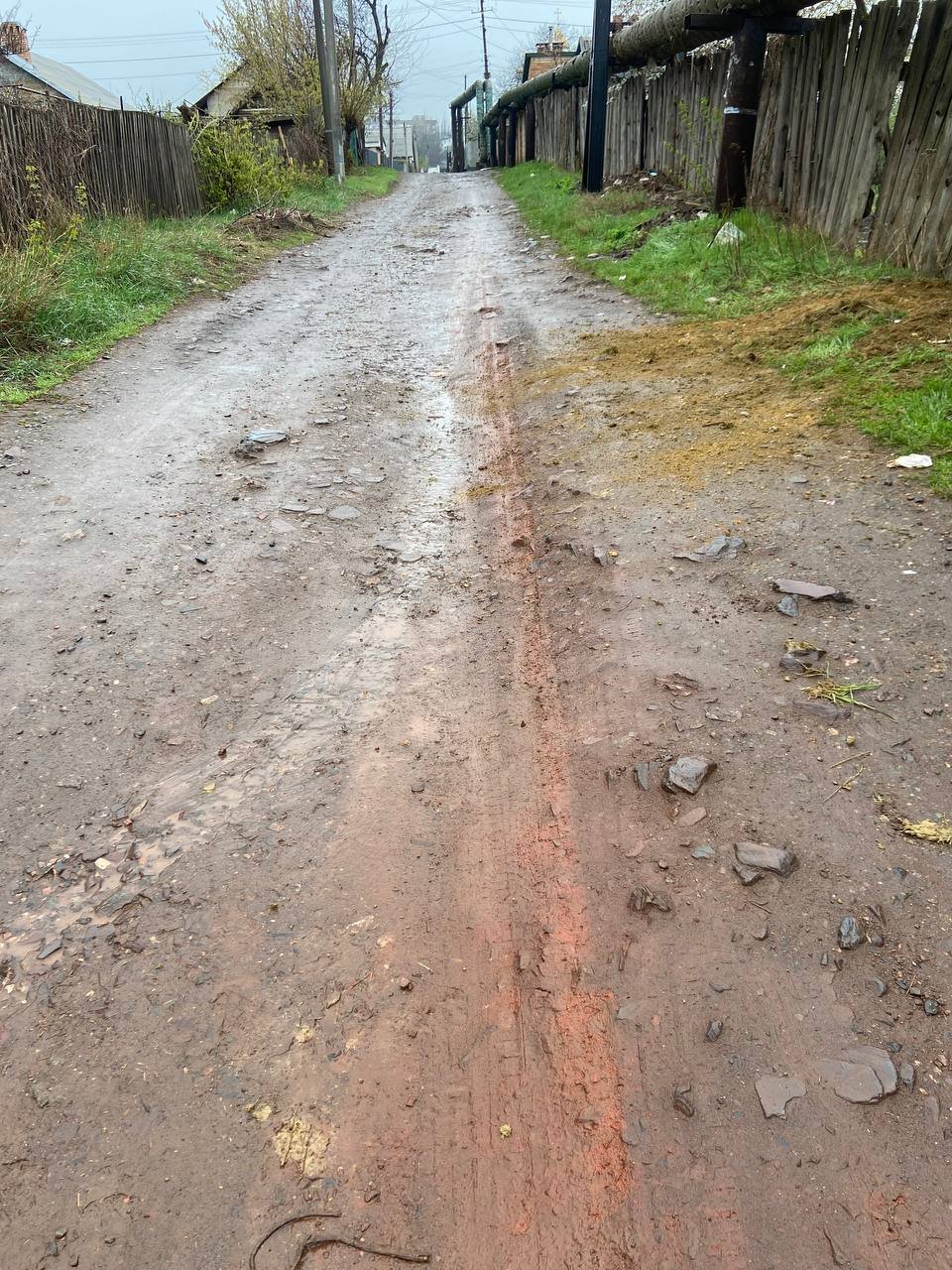
“Marharyta will be history”
“Do you remember this world when there was no war and people didn’t kill each other?” Marharyta Polovinko reads from her drawing notes in the summer after the start of the full-scale russian invasion. In August 2022, the then 28-year-old found herself in transit in Berlin, between an adventurous trip to Asia and her home country, now violently transformed into a “theatre of war” — teatr vijny in Ukrainian. Her journey, which was involuntarily extended upon the start of the full-scale invasion, included stops in Turkey, Indonesia, and Cambodia. She shared stories with friends in these places, about the parallel existence of victims and perpetrators in the former civil war country, which she was fascinated by. The reddish sand-rich soil reminded her of her own hometown of Kryvyi Rih in southern Ukraine; while massive sand mining is carried out in Cambodia, industrial iron ore mining in Kryvyi Rih has created the city’s red mountain formations.
Over the pages of her small-format leather sketchbook, already worn and swollen from much use, meander childlike bird creatures, screaming angels and rhizomes, but also dead bodies, graves or wolf-like dogs, mostly drawn with a simple pencil, sometimes scratched with the tip of a biro. A few drawings in earthy red tones stand out from the translucent grey: an elephant, palm trees, a wing in the air. She does not expect an answer to her rhetorical question about peace in the world — she denies it herself with a tired, implied smile.
Reflecting on the origins of war, genocide, and catostrophe proves to be one guiding figure of thought in the fantastic pictorial worlds inhabited by hybrid beings of this unique artist, activist, and fighter, who was brutally torn from life far too early: These are affect-generated shadow figures of a world that was violently shaped by the existential experience of war.
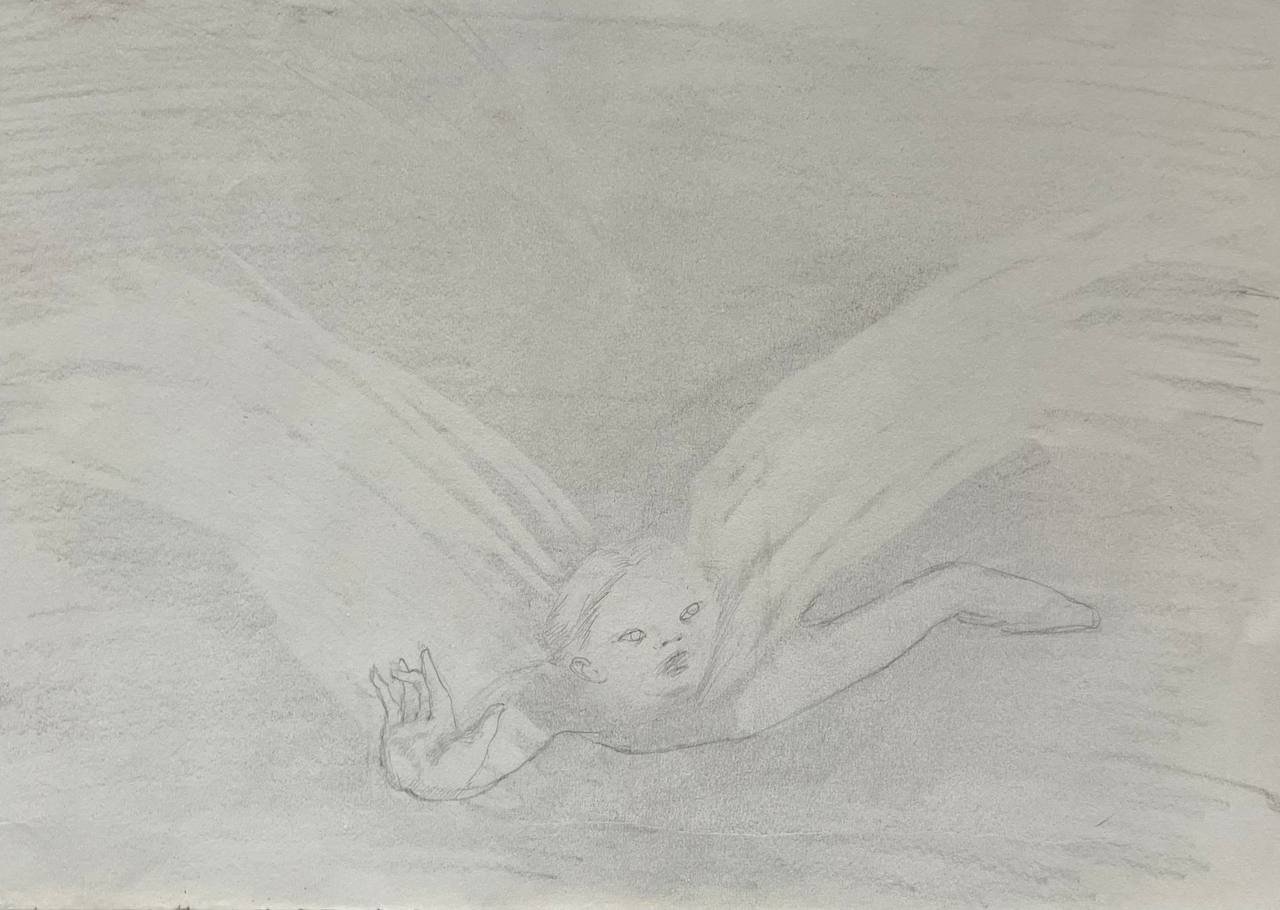
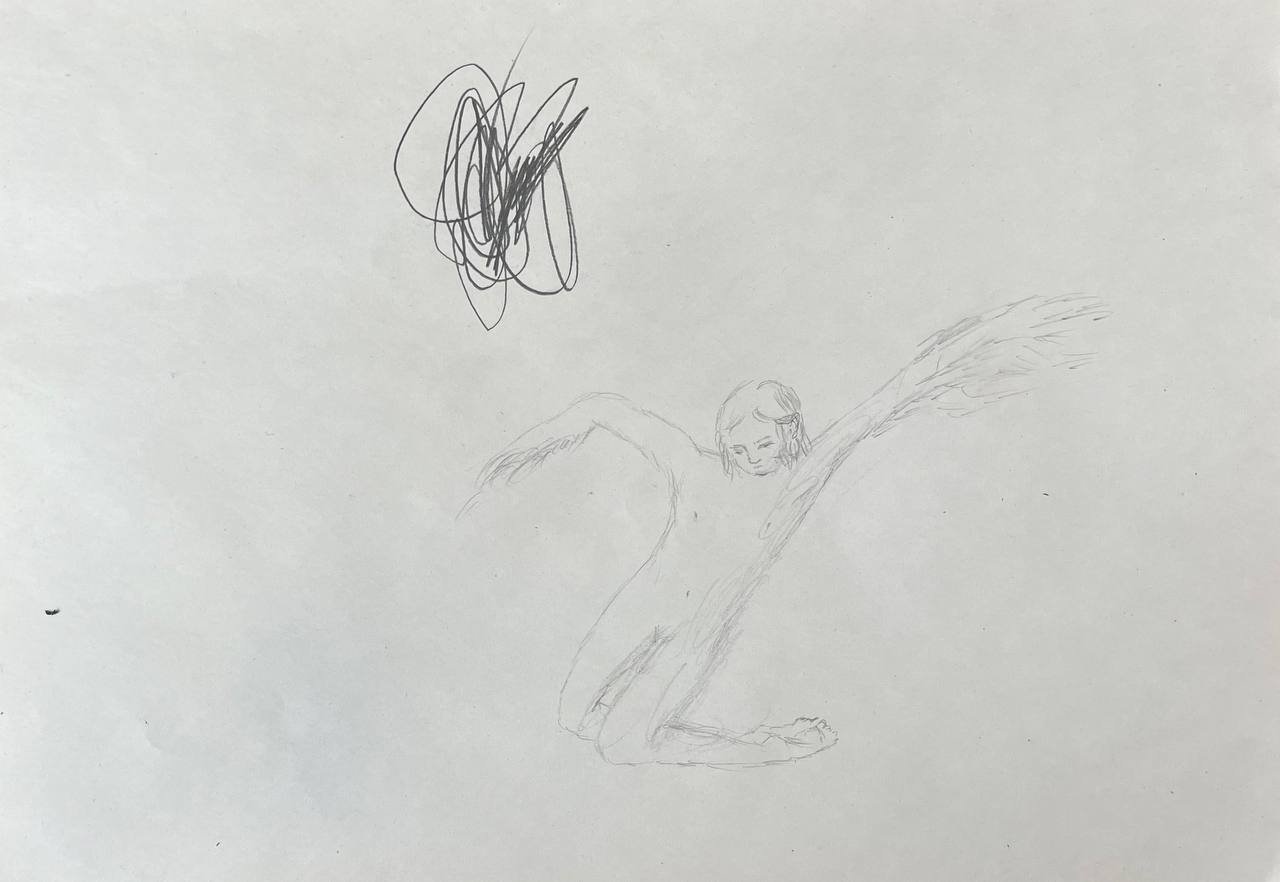
Blood as the colour of traumatic memory
In January 2022, I visited Marharyta’s modest, old apartment in Kyiv. In a corner next to the balcony door, she lovingly nurtured a small army of avocado seedlings, which were flourishing splendidly. On the whitewashed wall above the wooden kitchen table hung a small ensemble of two colorful oil paintings by her own hand: a portrait against an olive-green background of a young woman or a young man with short hair (a self-portrait?) in a red robe; in the lower right corner she had placed a small-format oil painting in muted colors depicting a stylized house with a street and trees. An artfully bent head-like wire object and a large portrait of a dog, drawn in pencil, stood out, revealing her free, creative spirit and gentle soul.
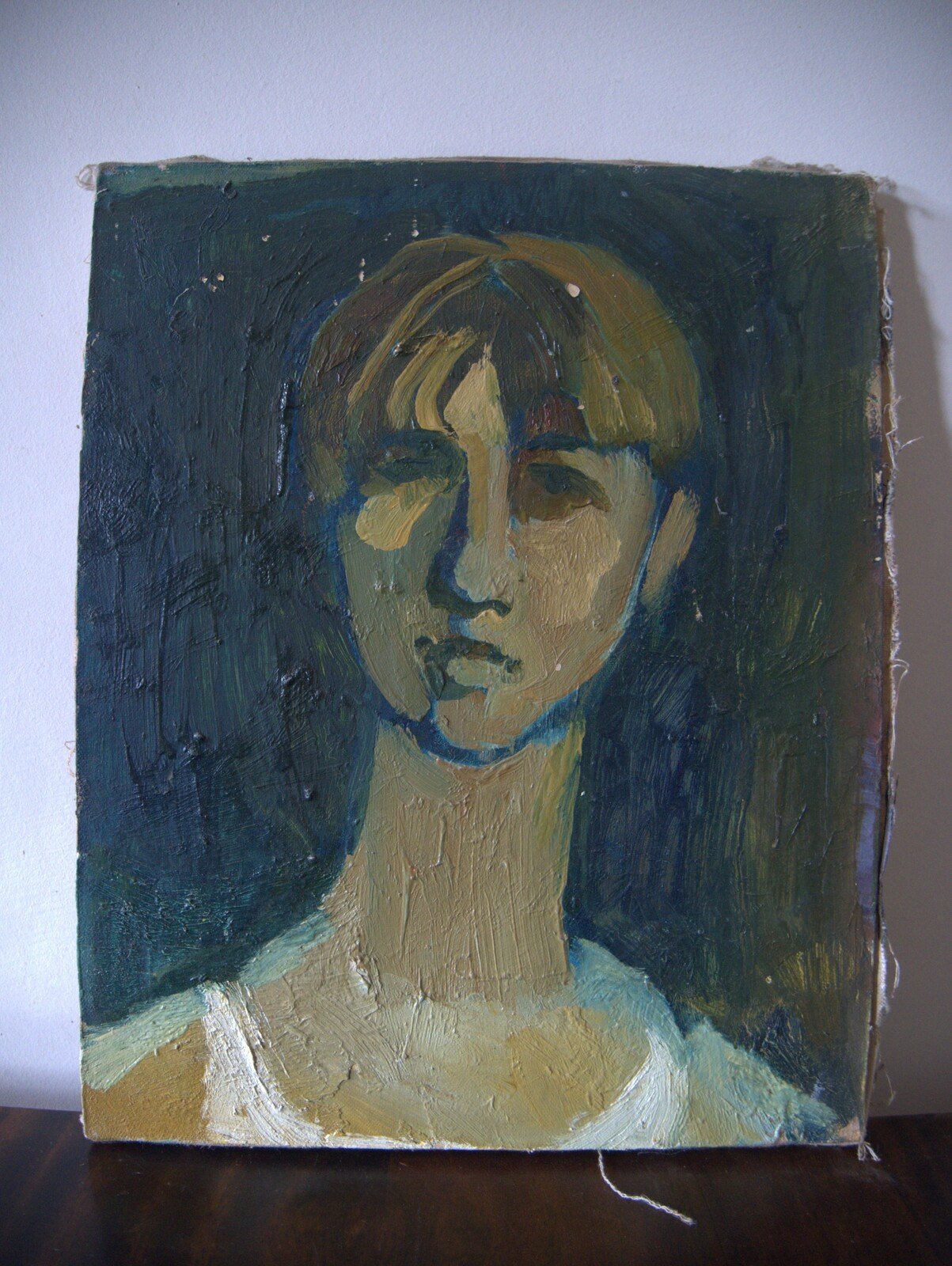
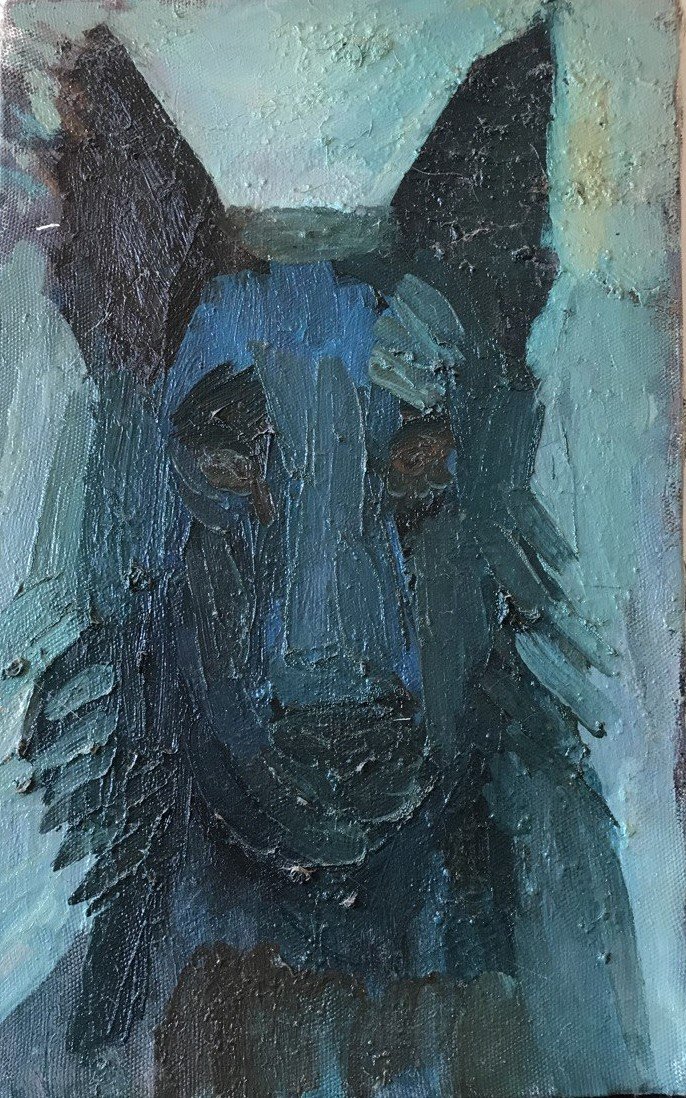
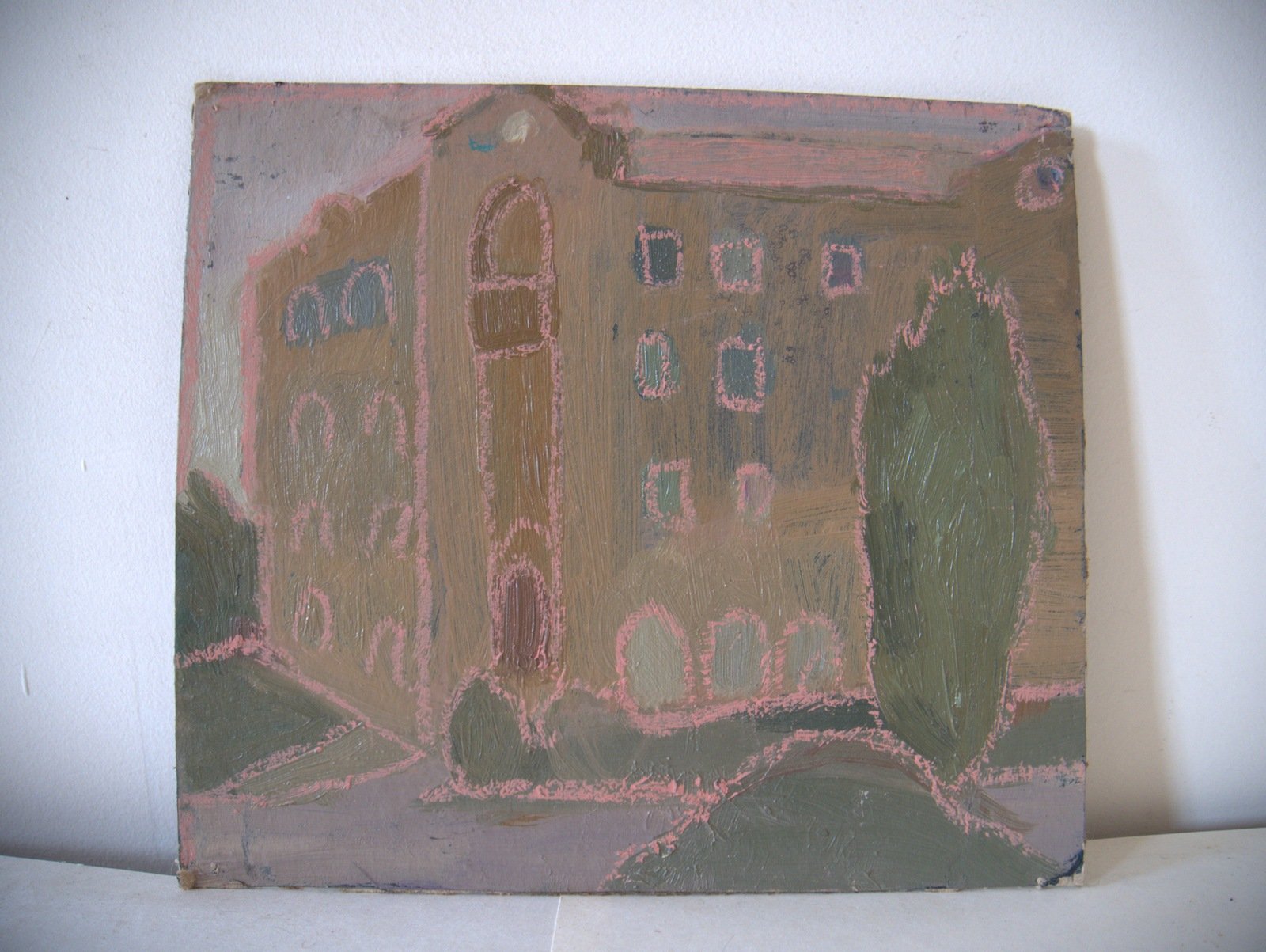
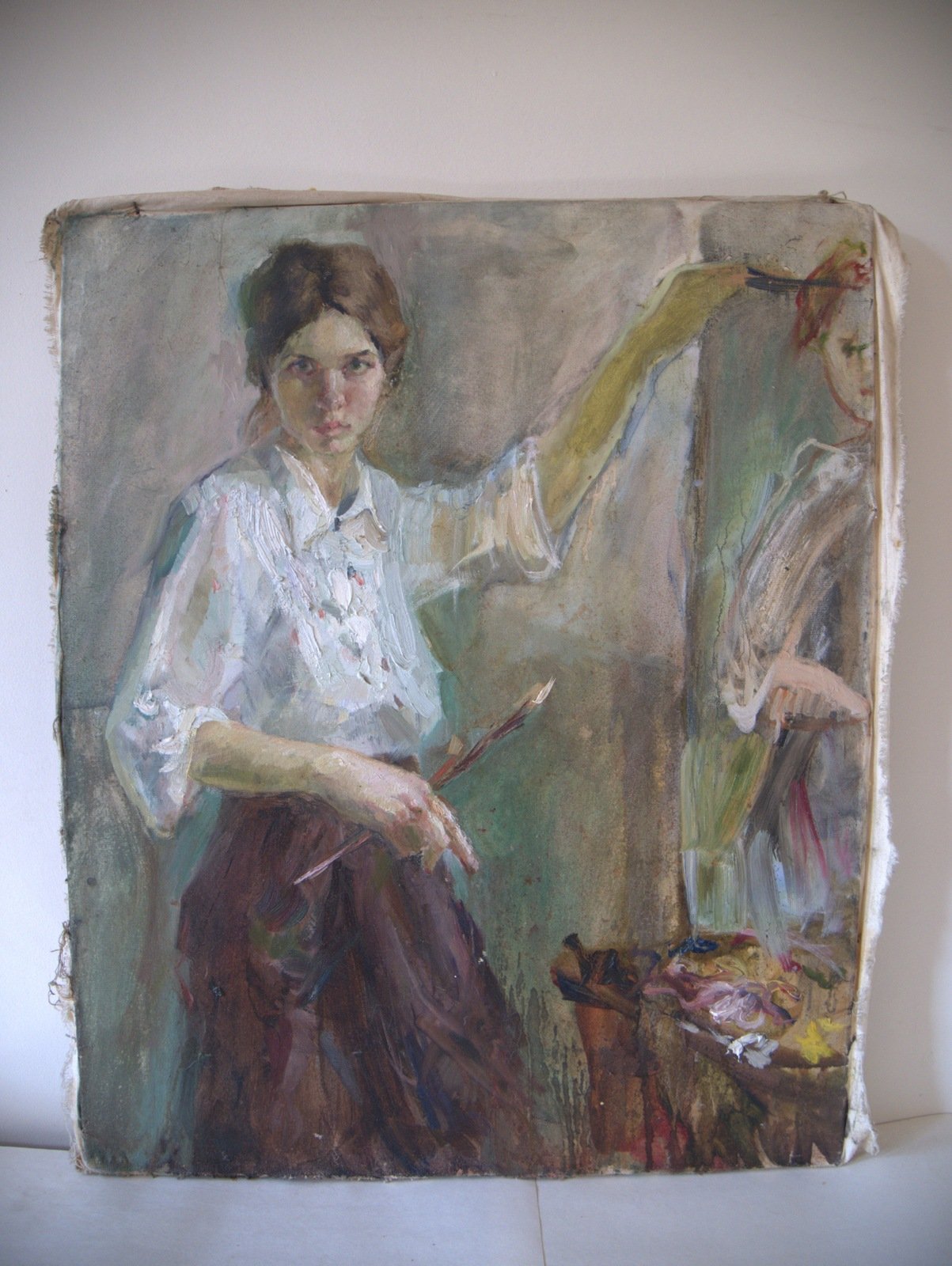
In August 2022, Marharyta was still experiencing the war from a distance and abstracting it from news images. The historical catastrophe, which her family, friends, and fellow countrymen and women had long been directly confronted with, was already developing into a physical experience for her. The diary — her main medium — became not only her closest confidant (she called it “my new best friend” on its leather cover), but also an extension of her body; an externalisation of her emotions. She extracted the only colour of her palette (red) from herself: “It was necessary to extract the material not from the surface, as it was with the pencil, but from the depth”, she said in her 2024 artist statement for Secondary Archive, where biographies and histories of non-Western women artists are collected.
It is a physical-material processing of war and trauma; the artist consciously exposed herself to the images and experiences of these horrors. Marharyta’s blood paintings bear witness to the process of wanting to overcome pure primal fear and arrive at a more complex understanding of war. In the blood as organic material, whose colour changes on the paper over time, she ultimately recognises a trace of the trauma of war: “The memory of trauma also remains, but its saturation, its colour changes. If something bad happens, we immediately want to cancel it. But over time, it becomes our experience, and we want to keep that.” With the use of her own blood as a drawing material, she does not want to evoke pity or disgust, she said in an interview with the Ukrainian art journal artslooker — it ultimately had a therapeutic effect for her. “It’s just material that fits the theme and the feelings that war evokes in me.”
Chaos reigns in her war drawings and blood paintings (the last publications on social media date back to March 2024): etched or erased detonations worked into the images, flying or falling (angelic) figures, personified death as a skeleton, desolate war scenes as a visualisation of absolute evil. Above all, this is Marharyta’s realisation – that evil is not a monster, but banal, and human-made.
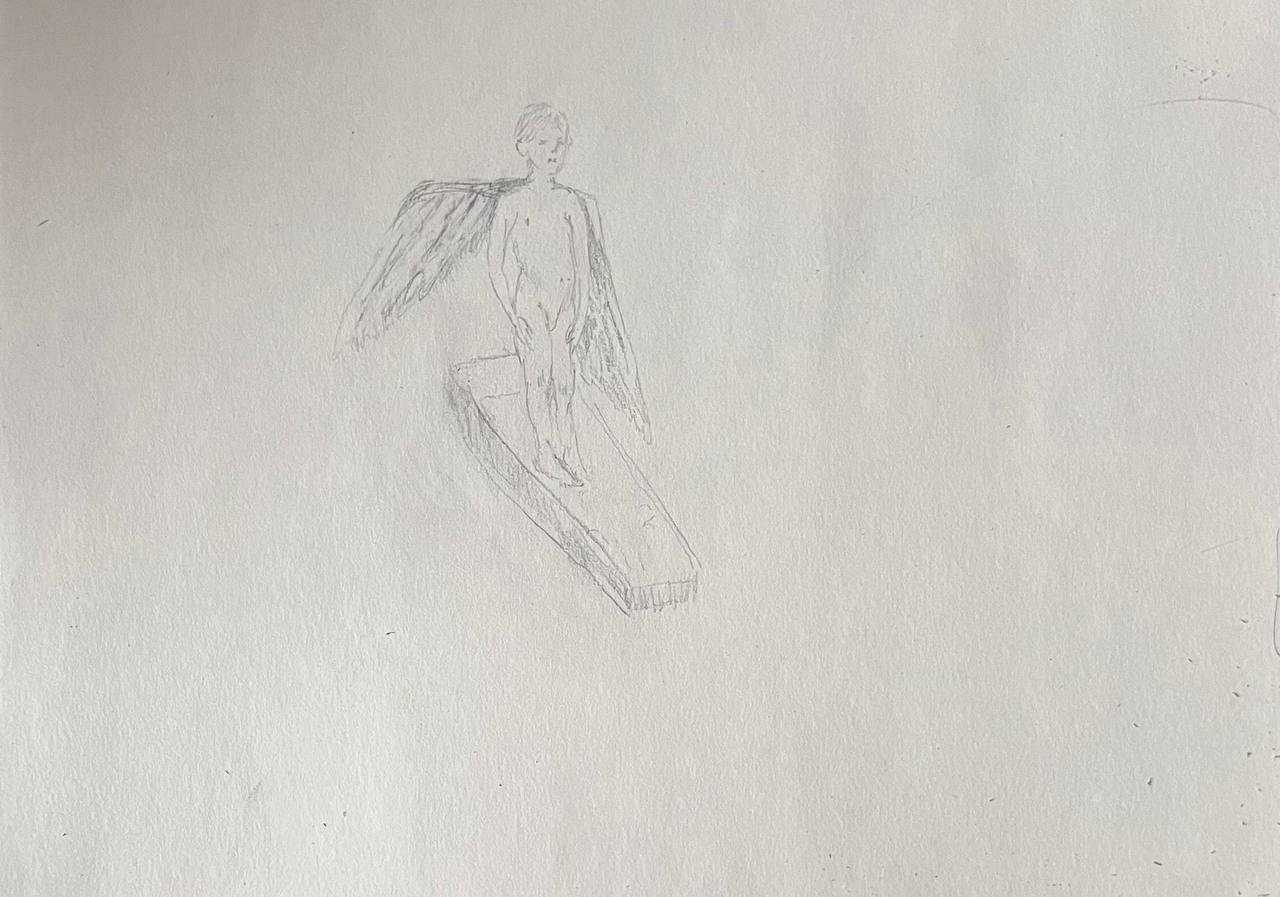
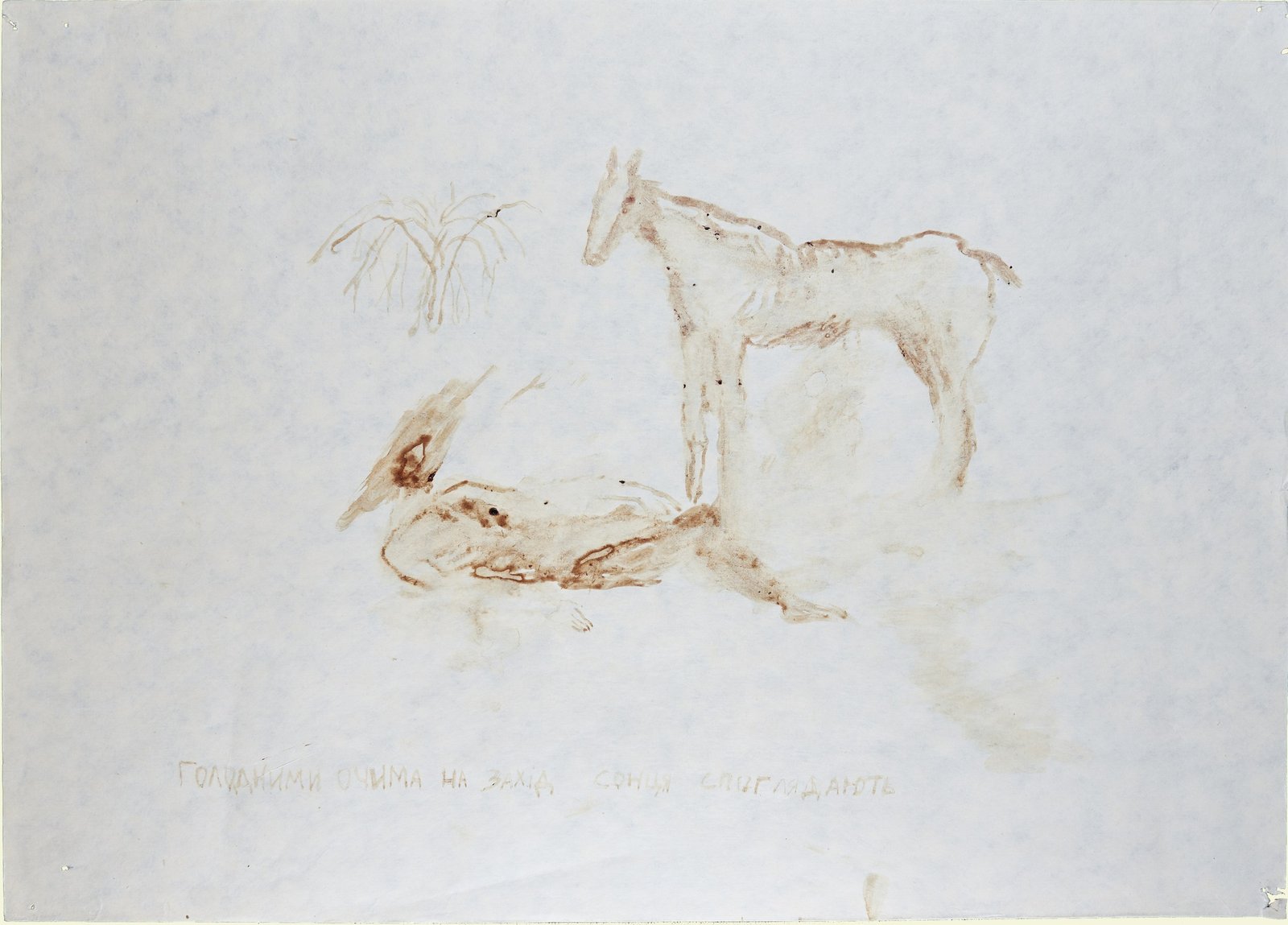
On the periphery of war
On that summer afternoon in Berlin, during the first year of the full-scale war, Marharyta also passionately described “her city,” the southern Ukrainian city of Kryvyi Rih — an important source of inspiration for the artist. “Kryvyi Rih already looked as if a bomb had hit it before the war started — how will my city have changed this time?” Red mountain formations, artificially created by local iron ore mining, covers entire streets in an earth-red colour after the rain. Scenes of typical industrial and working-class towns from a bygone era define the urban landscape of Kryvyi Rih. “Nevertheless, people still live in this reality. It’s funny, but in my artistic work I draw primarily from these dark abysses.”
Before the full-scale invasion began, Marharyta was interested in people in peripheral contexts, the post-industrial city, and nature. When the war came into her life, her work pushed her to the periphery: Instead of travelling back to Kyiv where she had studied and lived in previous years, she returned to her family, deciding to accompany medical evacuations as a volunteer paramedic. On her own mission, the young woman rescued animals from flooded Kherson and bought food and medicine for those left behind — and collected donations via her Instagram account. The latter is an impressive image archive not only of her art, but of her selfless rescue efforts, where appeals like this one can be found:
“Тваринки яких треба зараз рятувати не тільки тут а по всій Україні, тонуть на окупованій тереторії, помирають від осколків, голоду, руки окупанта їх врятують ваші донати на ЗСУ / Ви зробили вже дуже багато не дякуйте мені дякуйте собі, це ви все зробили”
“Animals that need to be rescued now not only here but all over Ukraine, drowning in the occupied territories, dying from shrapnel, hunger and by the occupying forces, are saved by your donations to the armed forces / You have already done a lot, don’t thank me, thank yourselves — you have done it all”
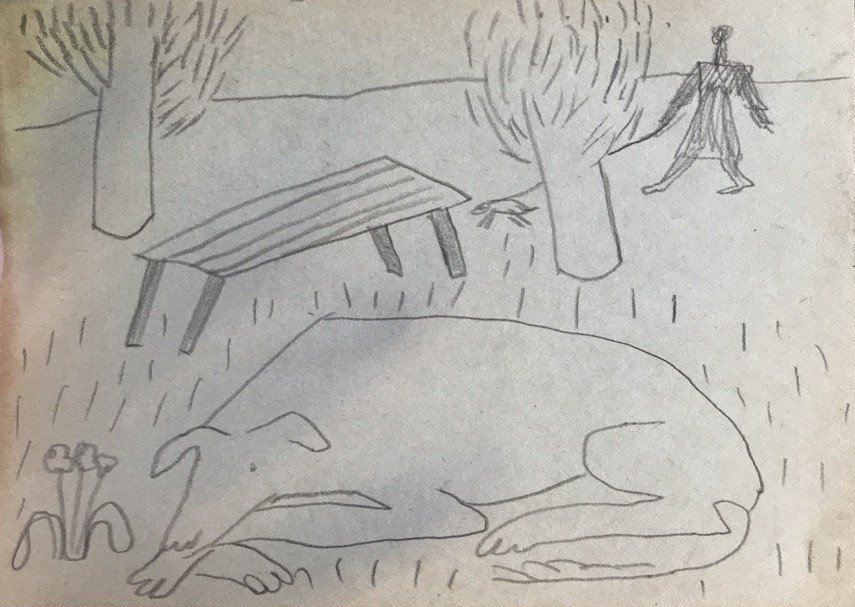
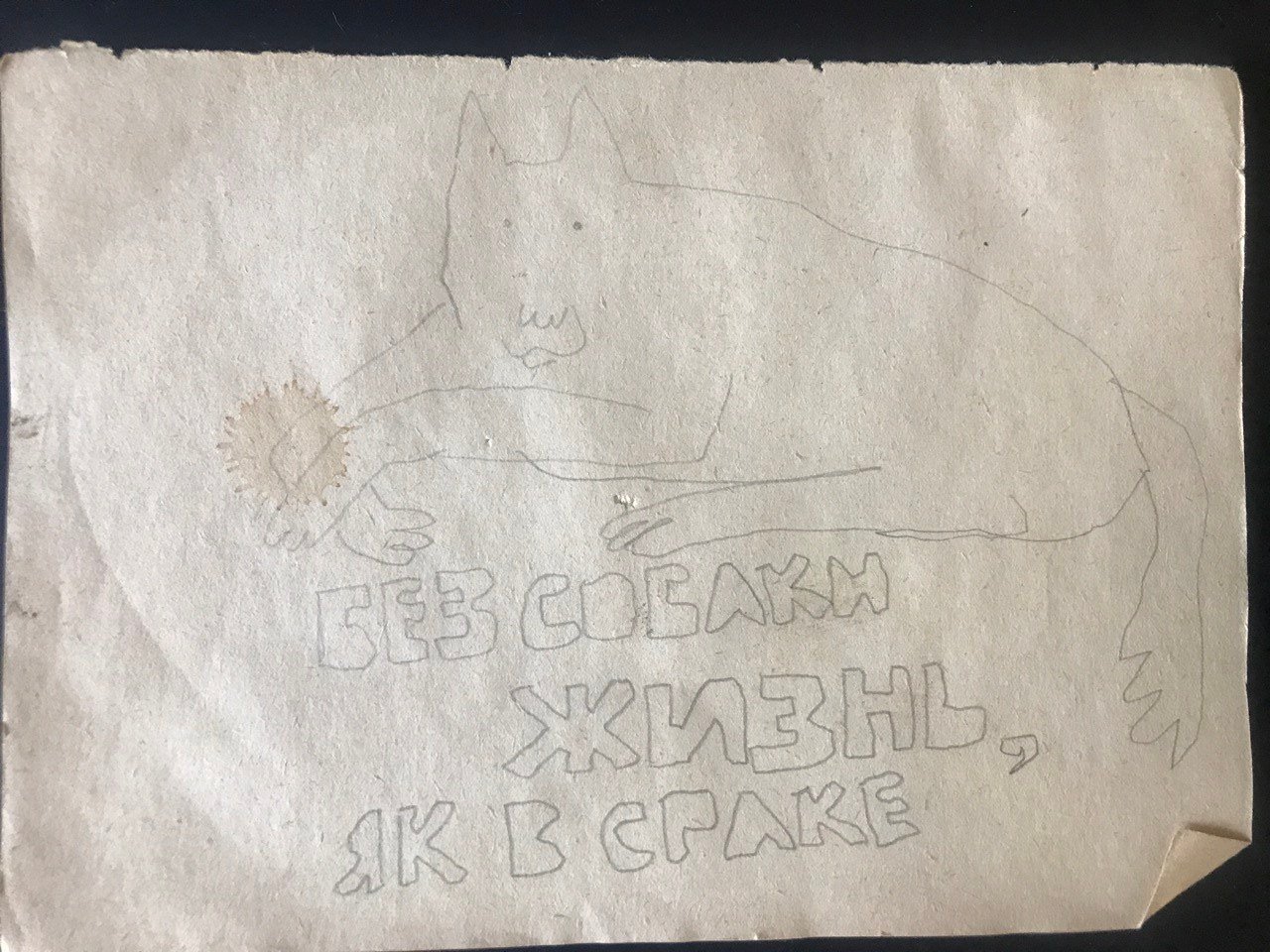
Marharyta has become history
In the destructive reality of war, Marharyta preserved her art as a “small island”: an anchor that connected her to her civilian identity, to a life in which she had a place as an individual rather than being absorbed into the collective body of resistance. As an artist, she had gained increasing visibility since the beginning of 2023, largely through her show First Exhibition (Persha Vystavka) at Detenpyla Gallery in Lviv. Illja Todorkin, curator of the exhibition sponsored by the Ukrainian Emergency Art Fund and the Emergency Support Initiative, wrote in the announcement:
“Маргарита народилась у Кривому Розі, зараз займається викладанням малюнку та цікавиться тактичною медициною. Відвідує курси парамедиків та малює свій щоденник кров’ю, який хоче закінчити коли закінчиться війна, дати людям змогу змити кров з малюнків. Маргарита не мала жодної виставки за життя та немає художнього портфоліо або резюме. Тому я хочу представити деякі її твори створені за останній рік.”
“Marharyta was born in Kryvyi Rih, now she teaches art and is interested in tactical medicine. She attends medical courses and draws her diary with blood, which she wants to finish when the war is over. She wants to give people the opportunity to wash the blood off her drawings. Marharyta has not had a single exhibition in her life and has neither a portfolio nor a CV. That is why I would like to present some of her works that have been created in the last year.”
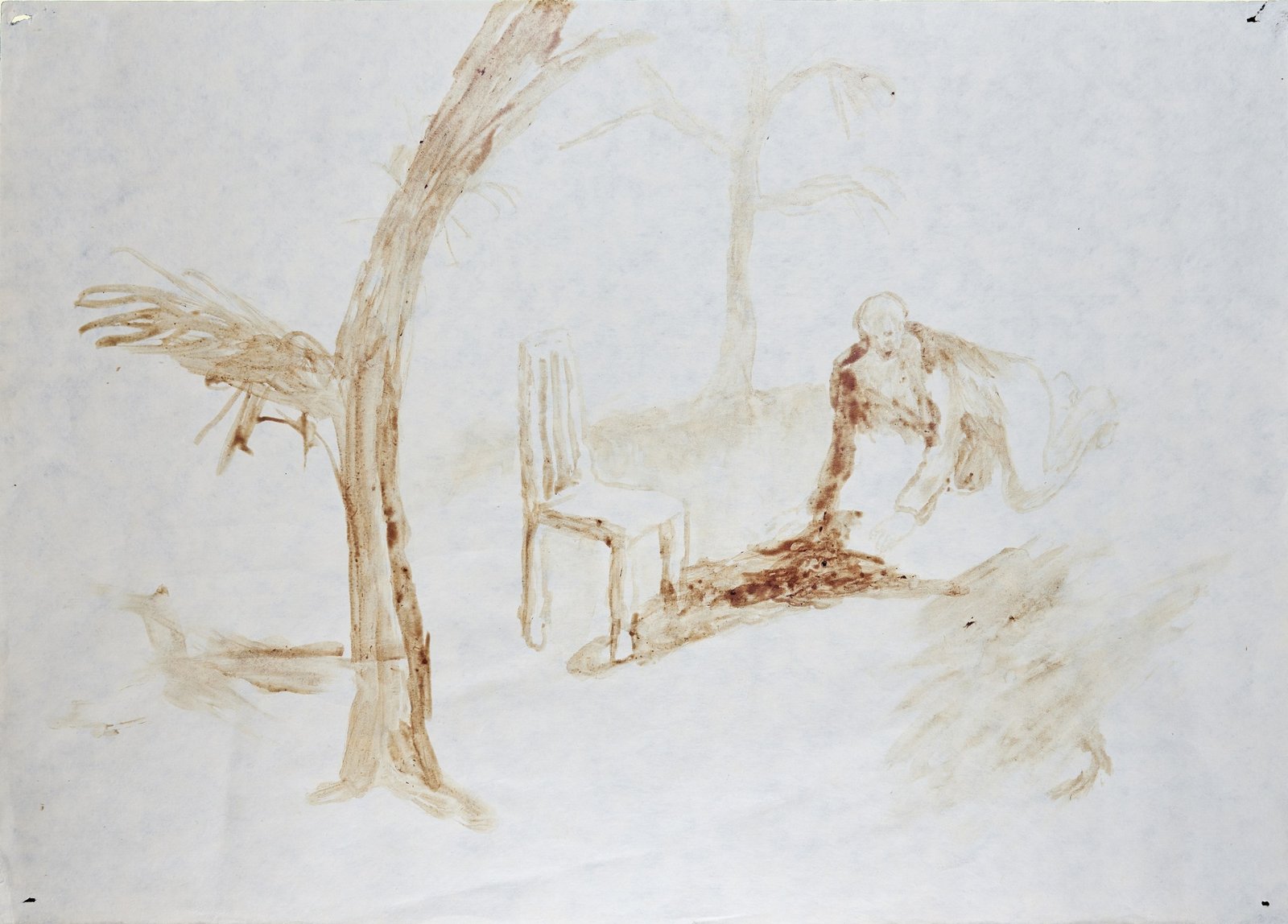
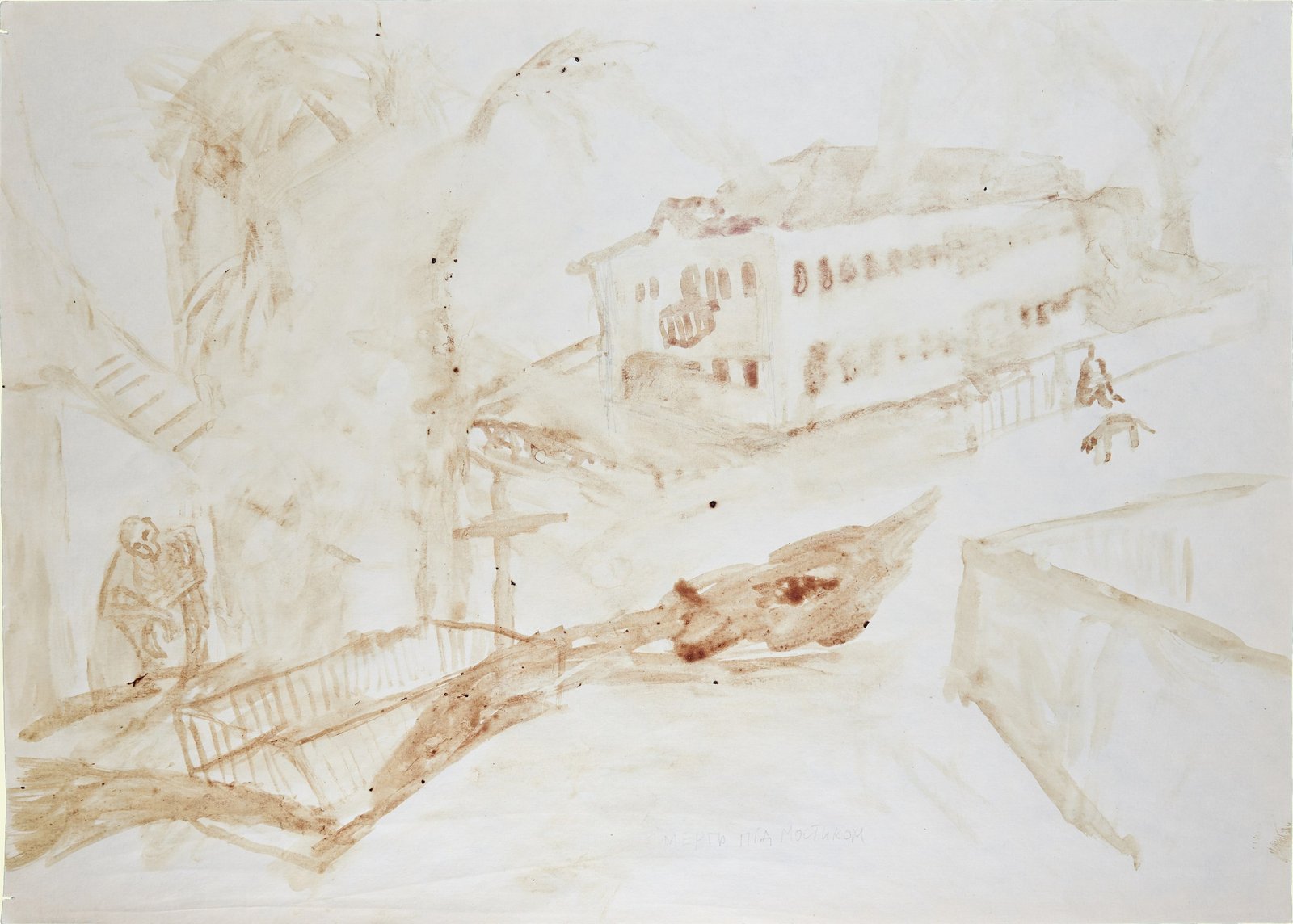
Nikita Kadan, internationally recognized multimedia artist, encountered Marharyta’s drawings and blood paintings for the first time in Lviv — and immediately understood their historical significance: “Her works were incredibly strong — the war time (or its premonition) was resonating in them already,” writes Kadan in a text message about his impressions after viewing Marharyta’s exhibition at Detenpyla. He included her drawings in two group exhibitions that he curated, NORM (31.05 – 02.06.2023, Kyiv) and On Loss (29.09 – 19.11.2023, Lviv). In the latter, Kadan presented her works alongside the painter Oleg Holosiy — one of the most important representatives of the Ukrainian New Wave — who tragically died in 1993. “Holosiy might be the most ‘mythological’ figure of Ukrainian art history, which is often built of tragic myths,” says Kadan. “The joint room of Marharyta and Oleg Holosiy proves the understanding of her practice as ‘historical’ in a most obvious way. Holosiy’s radically innovative practice was a turning point for the new Ukrainian art. Now we can say the same things about Marharyta.”
In the few months before her death, Kadan, known for his large-format charcoal drawings and approach to themes such as memory, history, and violence, was in contact with the artist, war medic, and drone pilot for the fundraiser exhibition On Fire (12 – 17.02.2025, Kyiv): the artist-curator, together with conceptual artist Zhanna Kadyrova, brought together wartime artworks, or “art that may belong in museums in the future, but is a tool of resistance today”, which included Marharyta’s blood paintings.
What does Marharyta’s “extractivist” approach tell us about the young generation of Ukrainian artists who have to live and work in times of active russian terror, loss, and existential threat? “They ‘extract’ the material of war and suffering from themselves, from their own lives,” says Kadan. “No tragic imaginary they have no relationship to, no ‘pain of others’ they are not the part of.”
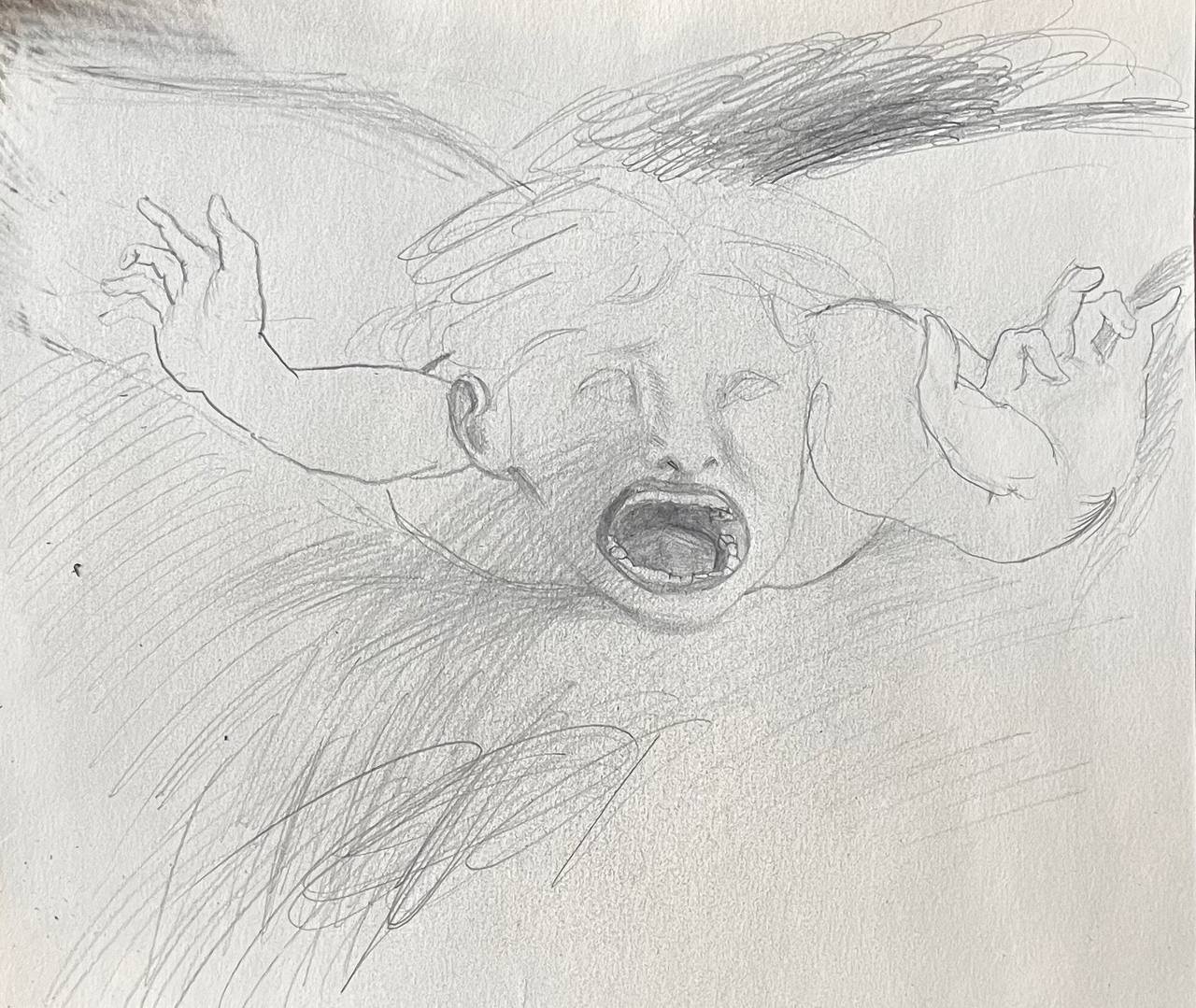
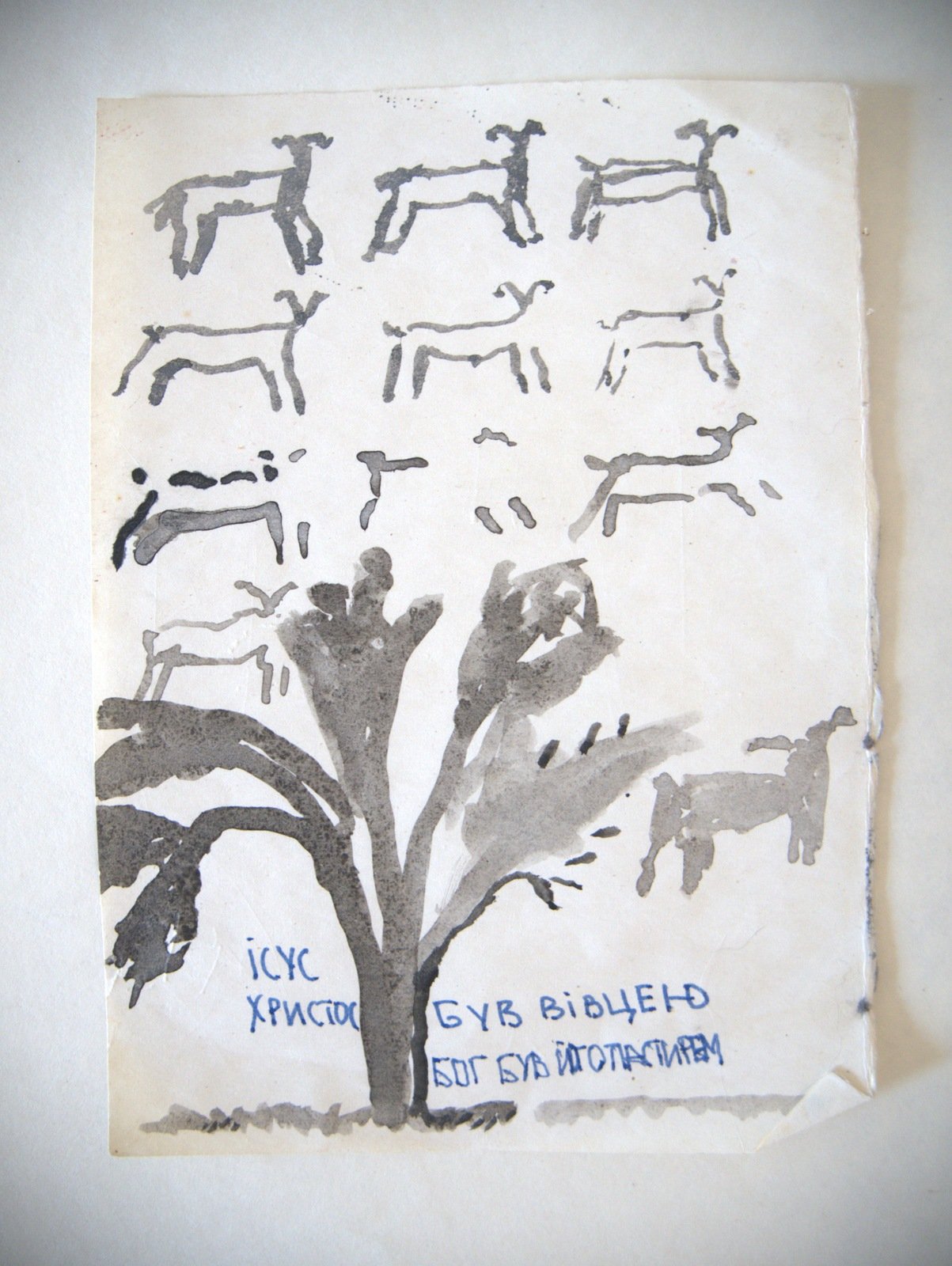
Marharyta’s death: a symptom
On April 5, 2025, family and friends took to social media to share information about the tragic death of their daughter, sister, and friend on the front line. Kadan was one of the first to publish a dedication to Marharyta, thus solidifying a certain mythology around her:
“Маргарита буде пам’яттю. Маргарита буде історією. Історією мистецтва, історією України, загальнолюдською історією гідності та світла. Чи можна спертися на світло? Абсурдно. Але вона – той промінь світла, на який можливо спертися. Щоб триматися у світі, щоб знати, як бути далі. (…)”
“Marharyta will be remembered. Marharyta will be history. The history of art, the history of Ukraine, the universal history of dignity and light. Is it possible to refer to the light? That is absurd. But it is the ray of light by which one can orientate oneself. To stay in the world, to know what to do next.”
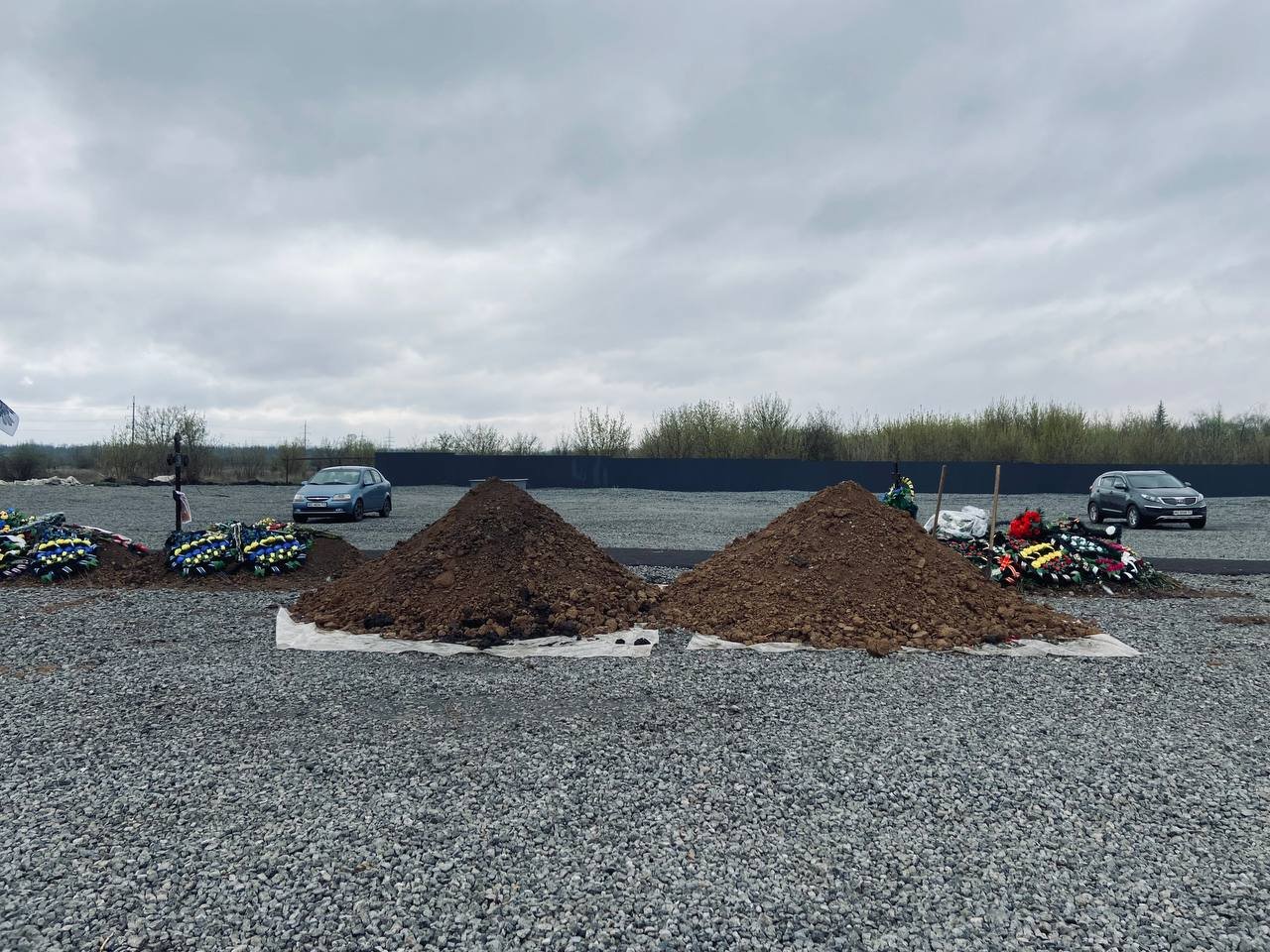
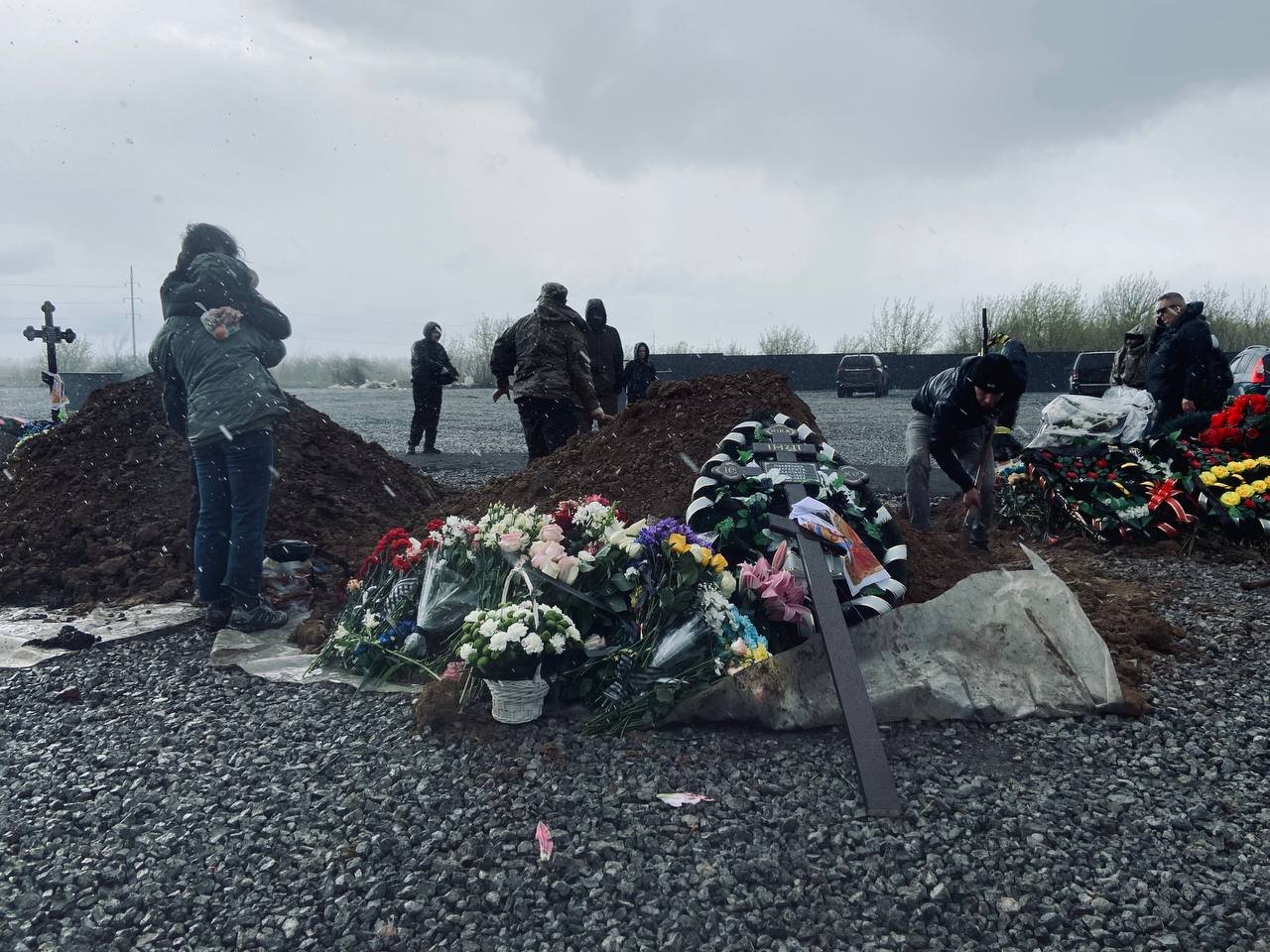
On the day of her funeral, April 11, 2025, the industrial city of Kryvyi Rih was covered in red: rain carried the traces of the extracted ore onto the pavement and streets, creating small, red lakes, as if the city – Marharyta’s home and site of reflection and imagination – wanted to say goodbye to its visionary, its courageous defender, in the only way that it could — its earth stained red in solidarity.
For the Ukrainian art community and all who knew her, the loss of this young artist is immense: her story reveals a tragic symptom of this russian war, namely that the aggression of this hegemonic state is also systematically directed against Ukrainian culture. The longer the civilisational and ecological catastrophe of war continues, the more victims will be torn from the centre of Ukrainian culture.*
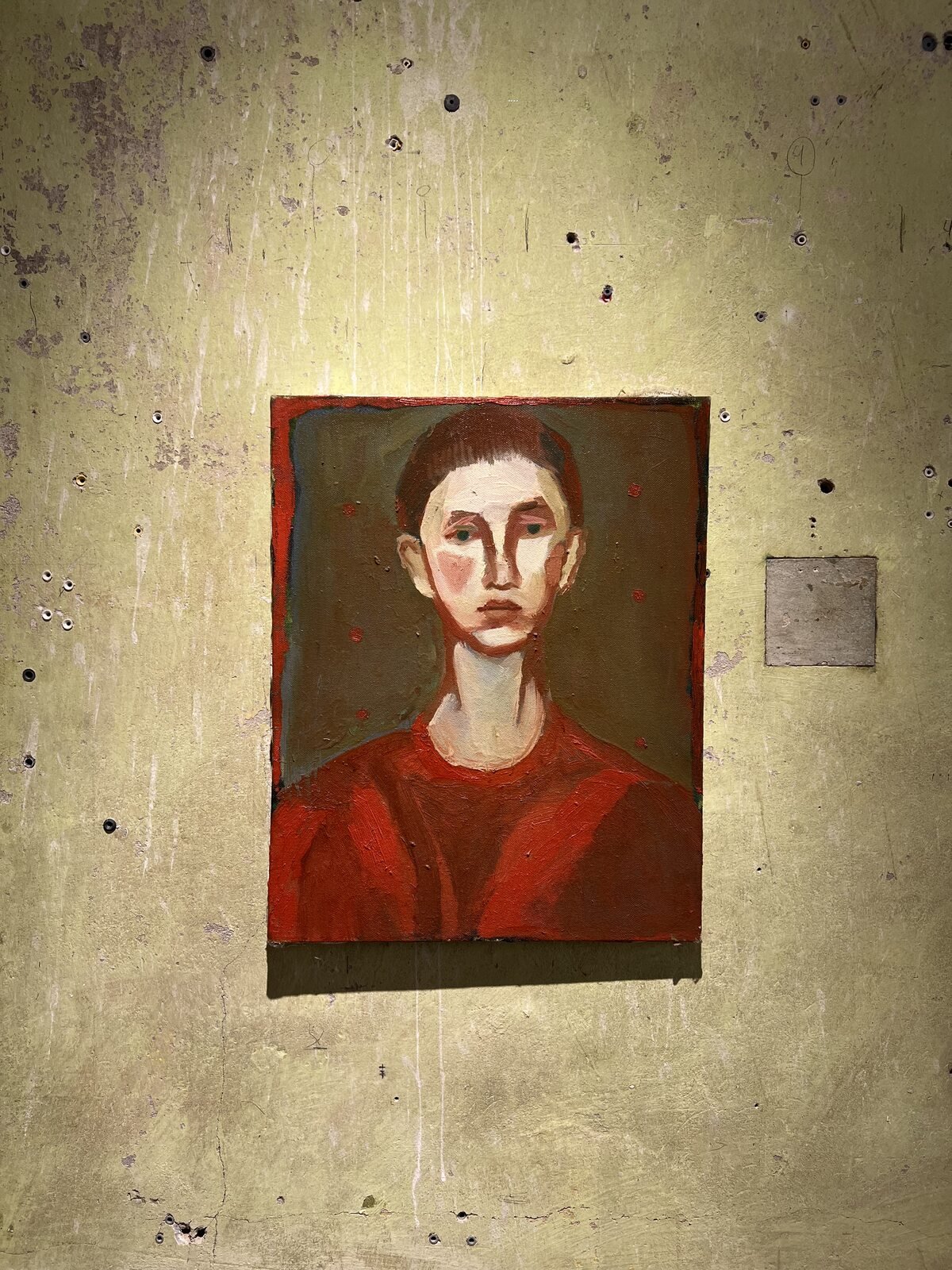
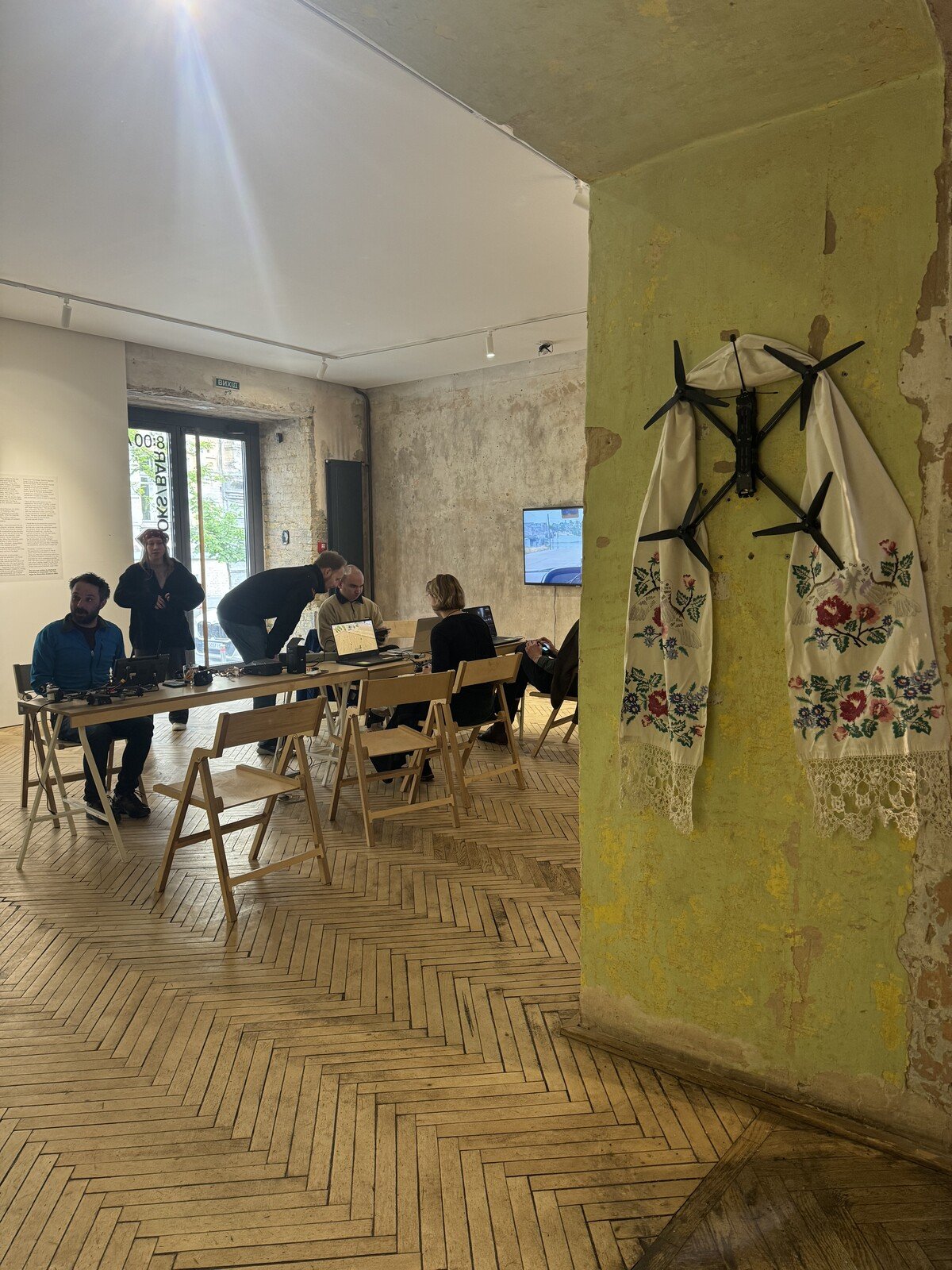
In the beginning of May 2025, relatives and friends came together in their grief and commemorated Marharyta’s life with “Week of Remembrance” at the Kyiv-based gallery The Naked Room. During the event, practical workshops were held by paramedics and drone specialists, and donations were collected for her battalion. There was a film screening at the bar Riumoshna 20, and on May 12th, in the framework of the ongoing commemoration and remembrance project Sytuatsiini klumby (“Situational flower beds”), a memorial to Marharyta was planted. The project, which utilizes flower beds as a metaphor for memory, was initiated in the winter of 2024/2025 by artists Dariia Chechushkova, Anya Nykytiuk, and Ksenia Shcherbakova. Together, in the courtyard of the National Ukrainian Art Museum, friends and colleagues of Marharyta placed a memorial stone and surrounded it with 31 red and white daisy plants.
*During the editorial process of this text, on August 10, 2025, we also lost beloved artist Davyd Chychkan: a thoroughly anti-fascist anarchist, whose convictions (fighting against the authoritarian “left”) ultimately led him to serve in the Ukrainian armed forces rather than remain “just” a political artist and astute activist at the forefront of the grassroots anti-fascist movement in the 2000s.
